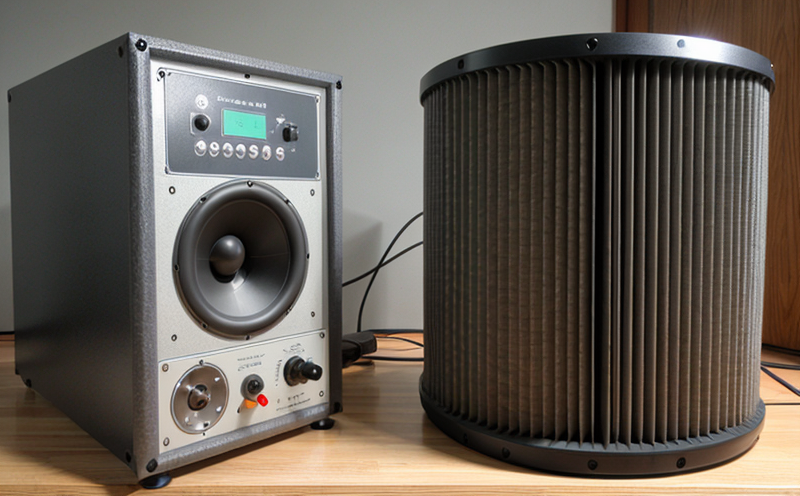ISO 20816-2 Vibration Measurement of Large Land-Based & Marine Engines
The ISO 20816 series specifies vibration measurement and evaluation methods for large land-based and marine engines. This service focuses on the second part, Vibration Measurement, which provides detailed guidance on how to measure and evaluate the operational vibrations in these engine types. This standard is critical for ensuring that equipment operates within safe and efficient parameters, thereby enhancing performance and reducing the risk of premature failure.
Large land-based engines are typically found in power generation plants, industrial facilities, and large construction sites. Marine engines, on the other hand, power ships, cruise liners, and other vessels operating in various marine environments. Both types share a common need for precise vibration measurement to ensure reliability, compliance with international standards, and safety.
The ISO 20816-2 standard specifies the procedures for measuring and evaluating the operational vibrations of these engines using accelerometers. It outlines how to install sensors at strategic locations on the engine to capture data accurately. The service provided includes detailed instructions on sensor placement, calibration techniques, and data acquisition methods that adhere strictly to ISO standards.
Our laboratory uses state-of-the-art equipment and software to perform vibration measurements according to this standard. Our team of experienced engineers ensures that every measurement is conducted meticulously, ensuring compliance with international regulations. The results are reported comprehensively, providing clients with a clear understanding of their engine's operational status.
This service plays a crucial role in the quality assurance process for engines used in both land-based and marine applications. By adhering to ISO 20816-2, we help ensure that these engines meet international standards of performance and reliability. This is especially important given the stringent requirements imposed by international shipping regulations and power plant safety protocols.
The accuracy and precision of vibration measurements can significantly impact equipment longevity and operational efficiency. By providing a reliable measurement service based on ISO 20816-2, we contribute to reducing maintenance costs and extending the useful life of engines in both land-based and marine environments.
Our expertise in this area ensures that clients receive accurate and actionable data, which can be used to make informed decisions regarding equipment maintenance and potential upgrades. This service is essential for organizations responsible for maintaining large-scale industrial assets or operating vessels across diverse maritime conditions.
Benefits
Adhering to ISO 20816-2 ensures that the vibration measurements of large land-based and marine engines are conducted in a standardized manner, which brings several benefits:
- Enhanced Reliability: By following internationally recognized standards, we ensure that the data collected is accurate and reliable.
- Compliance with Regulations: This service helps clients comply with international shipping regulations and power plant safety protocols.
- Improved Efficiency: Accurate vibration measurements can identify potential issues early on, allowing for timely maintenance and preventing costly breakdowns.
- Extended Equipment Lifespan: By identifying and addressing operational issues promptly, we help extend the useful life of engines in both land-based and marine applications.
- Reduced Maintenance Costs: Early detection of problems can lead to reduced downtime and lower overall maintenance costs.
- Enhanced Safety: Ensuring that engines operate within safe parameters helps prevent accidents and ensures the safety of personnel working around these systems.
- Meeting Customer Expectations: By providing accurate data, we help meet the expectations of our clients regarding equipment performance and reliability.
In summary, this service is designed to provide clients with precise vibration measurements that are compliant with international standards. These measurements can lead to enhanced reliability, improved efficiency, extended equipment lifespan, reduced maintenance costs, enhanced safety, and meeting customer expectations for both land-based and marine engines.
International Acceptance and Recognition
- American Society for Testing and Materials (ASTM) Standards: ASTM E1349-05 specifies the measurement of vibrations in reciprocating internal combustion engines, which is closely aligned with ISO 20816.
- British Standards Institution (BSI): BS EN ISO 20816:2014 has been adopted by numerous countries as a national standard, ensuring its widespread acceptance and use.
- International Organization for Standardization (ISO): ISO 20816 is widely recognized in the global maritime industry and power generation sector.
The international recognition of this standard underscores its importance in the field. Its adoption by major standards bodies like ASTM, BSI, and ISO ensures that it is used consistently across different regions and industries. This consistency facilitates seamless collaboration between manufacturers, operators, and regulatory authorities worldwide.
Our laboratory strictly adheres to these internationally recognized standards when performing vibration measurements for large land-based and marine engines. By doing so, we ensure that our clients receive reliable data that can be easily understood and applied across different jurisdictions.
Environmental and Sustainability Contributions
The measurement of vibrations in large land-based and marine engines plays a crucial role in promoting environmental sustainability. By ensuring that these engines operate efficiently, we contribute to reducing energy consumption and minimizing emissions:
- Energy Efficiency: Accurate vibration measurements can help identify inefficiencies in engine operation, allowing for targeted improvements.
- Emission Reduction: Engine optimization based on precise vibration data can lead to lower fuel consumption and reduced greenhouse gas emissions.
- Resource Optimization: By extending the lifespan of engines through regular maintenance informed by accurate measurements, we help optimize resource use.
The ISO 20816-2 standard supports these sustainability goals by providing a robust framework for measuring and evaluating engine performance. This ensures that operational parameters are optimized to meet environmental standards without compromising safety or reliability.
Our service is part of a broader commitment to promoting sustainable practices in the maritime and land-based industries. By adhering strictly to this international standard, we contribute to reducing the environmental impact of these sectors while ensuring compliance with global regulations.





